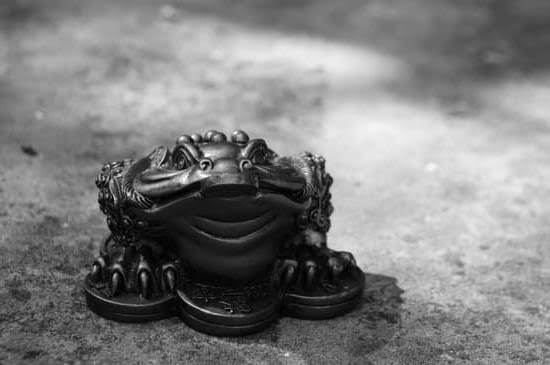Introduction to Feng Shui Floor Plan Analysis
Feng Shui is a traditional Chinese philosophy that has been used for centuries. It is based on the idea that our environments have an energy called “chi”, which can be balanced and manipulated in order to promote health and harmony. The various practices of Feng Shui are designed to enhance this equilibrium, creating a more harmonious environment for its inhabitants. Feng Shui floor plan analysis is used to create a sense of balance within a home or building by utilizing certain design elements and arranging furniture, spaces, and other objects according to predetermined guidelines. This practice involves assessing the flow of energy within a room or structure in order to determine how it can best be arranged in order to maximize positive chi and minimize negative energies. Through analysis of the spatial dynamics and direction of the building, as well as consideration of its occupants’ personal goals, the practitioner can customize each space in order to most effectively promote health, wealth, and happiness. In addition to its purpose in achieving balance within one’s home or business, Feng Shui floor plan analysis also has implications for overall wellbeing that range from physical wellness benefits to spiritual growth opportunities.
What is Feng Shui Floor Plan Analysis?
Feng Shui Floor Plan Analysis is the use of various tools and techniques to determine how certain movements of energy (the Feng Shui “chi”) interact with a building or space. It is based on traditional Chinese theories that view a balanced blend of both positive and negative energies as essential for health, prosperity, and good luck.
The data used in a Feng Shui floor plan analysis typically includes the identification of large landforms outside an existing structure, such as mountains and ocean currents, but also includes mapping information related to indoor elements such as furniture placement, door and window placements, paint color/materials used, lighting fixtures, etc. This data is then compared to principles set forth in Yin Yang Theory. Based on this comparison the consultant should be able to identify areas allowing life energy to thrive or stagnate. Recommendations are drawn from the assessment to help bring balance within the home’s energy flow addressing both structural elements as well as interior decorations and design features.
How Does Feng Shui Floor Plan Analysis Work?
Feng Shui, an ancient Chinese practice that emphasizes the flow of energy within our environment to ensure harmony and balance, is used to analyze a floor plan in order to create a more aligned path for energy. Through Feng Shui principles, one can look at how existing furniture and structures work together with natural elements like the sun’s position in the sky, the wind and water flow around exterior walls and outside entrances, as well as how doors, windows, and stairs are placed within the space.
The goal of a Feng Shui floor plan analysis is to find ways to enhance or rearrange furniture placement and other features within the structure in order to improve flow, redirect stagnant energy patterns, banish negative energies from entering the interior space and attract positive beneficial energies into it. It can help create an atmosphere that encourages creative thinking, clarity of thought and motivates people who enter its domain. Additionally it allows occupants to use their environment in every possible way – allowing both beauty and functionality.
To conclude this analysis 1) spatial relationships (Feng Shui component), 2) environmental influences(natural component), 3) individual needs (personal component) are all taken into consideration when doing a Feng shui floor plan analysis. The goal of these steps allow practitioners to help clients embrace good chi (positive energy).
Elements of a Feng Shui Floor Plan Analysis
A Feng Shui Floor Plan Analysis is an assessment of the environment around a home, building or business through examining their floor plan. The analysis assesses how the surrounding design will impact internal energy and influences health and prosperity.
The major components of a Feng Shui floor plan analysis typically include examining all doors and hallways. This includes noting the direction each door and hallway faces, as well as discussing potential obstacles such as walls and corridors that lead to stagnation or disruption in energy flows, thus affecting inhabitants in a negative way. In addition to inspecting architectural features, the lifestyle of inhabitants should also be considered; for example, do they have any shared spaces such as bedrooms? Does furniture arrangement support easy transitions between activities? Finally, light sources like windows should be evaluated for balance and symmetry, which promotes wellbeing and relaxation.
Benefits of a Feng Shui Floor Plan Analysis
Feng Shui floor plan analysis is a practice of harmonizing the energy of your home in order to support and enhance healthy living. It can help to improve communication, sleep patterns, meditation and creativity, as well as helping to create balance within a family unit or among roommates. Through identifying the flows of energy within a living space and examining the ways in which furniture is placed and used, a practitioner can create an optimal arrangement that serves all those living in the space.
By connecting with the elements that support individual rooms, Feng Shui floor plan analysis helps to support good health, lessen stress levels and increase positive vibes throughout the home. The process also helps eliminate clutter from any particular area by providing simple guidelines for organizing items throughout your home based on their function or use. Additionally, whether it’s installing fresh paint or rearranging furniture, Feng Shui helps unlock potential within an existing space so you can create an area that lifts your spirits and sparks positivity.
Utilizing Feng Shui’s holistic approach on the entire home will offer more than aesthetic appeal; it can establish greater harmony between you and your dwelling place. With its ability to open up creative energy doors, Feng Shui floor plan analysis provides long-term benefits such as stimulating wealth accumulation and joyfulness as well as mental clarity and energizing intention setting.
Tips to Make the Most of Your Feng Shui Floor Plan Analysis
1. Keep colors and furniture placement in mind when arranging your space. This is especially important from a Feng Shui perspective since colors have special meanings associated with them, helping to create positive energy in different parts of the home.
2. Utilize the five elements of nature: earth, water, wood, fire and metal. Each element should be given its own corner or area of focus in your floor plan to promote balance throughout the house and keep negative energies away.
3. Identify key focal points in each room that you can use to draw attention away from negative influences. This could include anything from a beautiful painting or sculpture to an aquarium or fountain that adds an element of tranquility to the room.
4. Pay close attention to how light falls upon different areas within the house, improving circulation throughout and preventing stagnant energy. The same goes for air flow – make sure there is sufficient ventilation in each room to promote a healthy atmosphere for all those living there.
5. Accessorize strategically by filling empty corners with plants or decor which represent various elements and convey positivity into the room’s energy field .
6. Declutter! As much as possible reduce furnishings and belongings – too many items blocking pathways can obstruct positive energy flow throughout your home reducing effectiveness of Feng Shui principles at work in your house!
Conclusion
Understanding the underlying principles of Feng Shui can help you create balance and harmony in your home. By employing these principles, you can design an environment that sustains dynamic energy flows and encourages feelings of harmony and peace. Additionally, Feng Shui is not a one-size-fits-all system: it’s essential to take into account your individual needs and preferences as you plan your living space.
The most fundamental principle of Feng Shui is that the flow of Chi, or vital energy, must be open and unobstructed. This can be done by physically organizing your floor plan so that energy flows smoothly through furniture placement and focal points. You don’t need to feel overwhelmed with lots of rules and decorations ” making simple changes to the layout and décor can have a huge impact on how comfortable and secure you feel in your home.
Similarly, using natural materials like wood, water features, plants, soft lighting, classic shapes in furniture pieces and artwork will all work harmoniously together to help represent balance within your home. That said, it’s important to stick to pieces that hold personal meaning for you; this will ensure that each element blends together effortlessly without feeling too overlapping or crowded.
Finally, focusing on the importance of living with intention will assist in creating harmony within your home. Whether this means using rituals like diffusing calming essential oils while studying or only contacting people who make you feel joyful”making small changes based around intention will bring balance into your living space and ultimately allow you to unlock the wisdom inherent within it.

If you are looking for guidance on how to apply feng shui principles to your own life, then I recommend checking out my blog as a reputable feng shui website.





